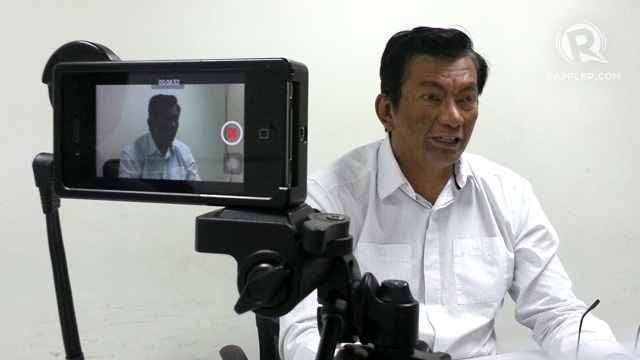SUMMARY
This is AI generated summarization, which may have errors. For context, always refer to the full article.

MANILA, Philippines – It’s time to move on. “Tapos na ang cycle for self pity (Let’s end the cycle of self pity).”
With massive reconstruction and extensive rebuilding needed after Super Typhoon Yolanda (Haiyan), Albay Governor Joey Salceda said it is time the affected communities – in fact, the entire country – get on track now, starting with what we have.
The governor of perhaps the most disaster-prepared province in the Philippines spoke to Rappler reporters on Tuesday, November 19.
Eleven days after the monster typhoon wiped out a number of villages, displaced hundreds of thousands, and affected millions, mostly in the Visayas, he suggested 5 steps toward rebuilding:
1. Get relief to the people – fast.
When it comes to relief distribution, the government should make it like how blood circulates in the body – systematically and fast.
Salceda said we have the resources to get relief to all who need it, if only their deployment is well-planned and coordinated. (According to data from the National Disaster Risk Reduction and Management Council, at least 22,730 personnel, 1,285 vehicles, 77 seacraft, 110 aircraft, and 27,237 “assets” have been deployed in the aftermath of the typhoon.)
It’s also important to clear the roads of garbage and debris to make transportation of goods faster and easier.
2. Have a national conductor, but let locals move.
At the moment, the country needs an “orchestra conductor” on a national scale, someone who can coordinate relief efforts on a macro level. But when it comes to local mobilization, it is important to respect the supremacy of local government units (LGUs).
“No mayor, vice mayor, or councilor died during the storm,” Salceda said, so it should be easy to revitalize the LGUs down to the barangays and make them work while minimizing political division.
Do a cluster approach – dividing the tasks between clusters makes coordination easier and the people on the ground more efficient. Such an approach also offers flexibility.
“Kung ayaw ipadaan [ng donors] ang pera sa amin (LGUs), puwede nila gawin, pero di sila makikipag-duplicate. May sense of coordination sa local.” (If donors don’t want to give the money to us LGUs, they can do that, but they shouldn’t duplicate what we’re doing. There should be a sense of coordination with the locals [where they should channel that].)
Having a cluster overseeing particular needs of the victims helps in easily mapping out which areas are in need of specific goods – food, water, clothes, etc. – and making sure that the victims get enough of each.
3. Give victims money, not food.
Rebuilding a community will surely take time and funds. However, starting early with the victims can go a long way. “Instead of giving them food, give them money,” Salceda said. Commerce is set to follow once there is money being circulated in the region. This also gives them the option to choose what to eat and the power to spend.
It is also important to rebuild basic infrastructure, such as hospitals and schools. In effect, these can restore human dignity to residents in the affected areas.
Don’t prolong the use of tent cities – they can be dehumanizing. Instead, invest in better constructed housing units like bunk houses.
Rebuilding what was lost is also not enough. “We should be building back better elsewhere,” he said, since now is the perfect opportunity to build a resilient society in one of the country’s poorest nations. (READ: Lessons: How Indonesians dealt with their own tsunami tragedy)
4. Hold a pledging session to raise $14 billion.
How much do we need for reconstruction? Based on past past disasters such as Pepeng and Ondoy, he said, $14 billion.
With that much money needed, he suggested a donor pledging session, where all international organizations and foreign governments that wish to help in reconstruction can signify their donations.
The money will not only be spent on reliable infrastructure but on livelihood and a viable ecosystem for sustainable community life.
The people affected by the typhoon should not depend on one of their region’s top products – the copra. Replanting coconut trees and waiting for them to grow and bear fruit will take about 6 to 7 years.
Instead, they can rehabilitate their agriculture by planting fast-growing crops like abaca, camote, corn, rice, and bananas. This will help them in creating a new livelihood.
5. Build more durable infra – on higher ground.
Learn from history. Leyte, for example, was wiped out by storm surges twice in history – in 1898 and 1912. Rebuilding infrastructure in the same areas that were destroyed by the storm only puts people in vulnerable state.
Instead, build new and better, durable infrastructure in areas that are 12 to 15 meters above sea level where people will be safe from flooding.
Salceda said: “Now is the chance for a new city, a new Tacloban. A new Waray Nation.” – Rappler.com
Add a comment
How does this make you feel?
There are no comments yet. Add your comment to start the conversation.